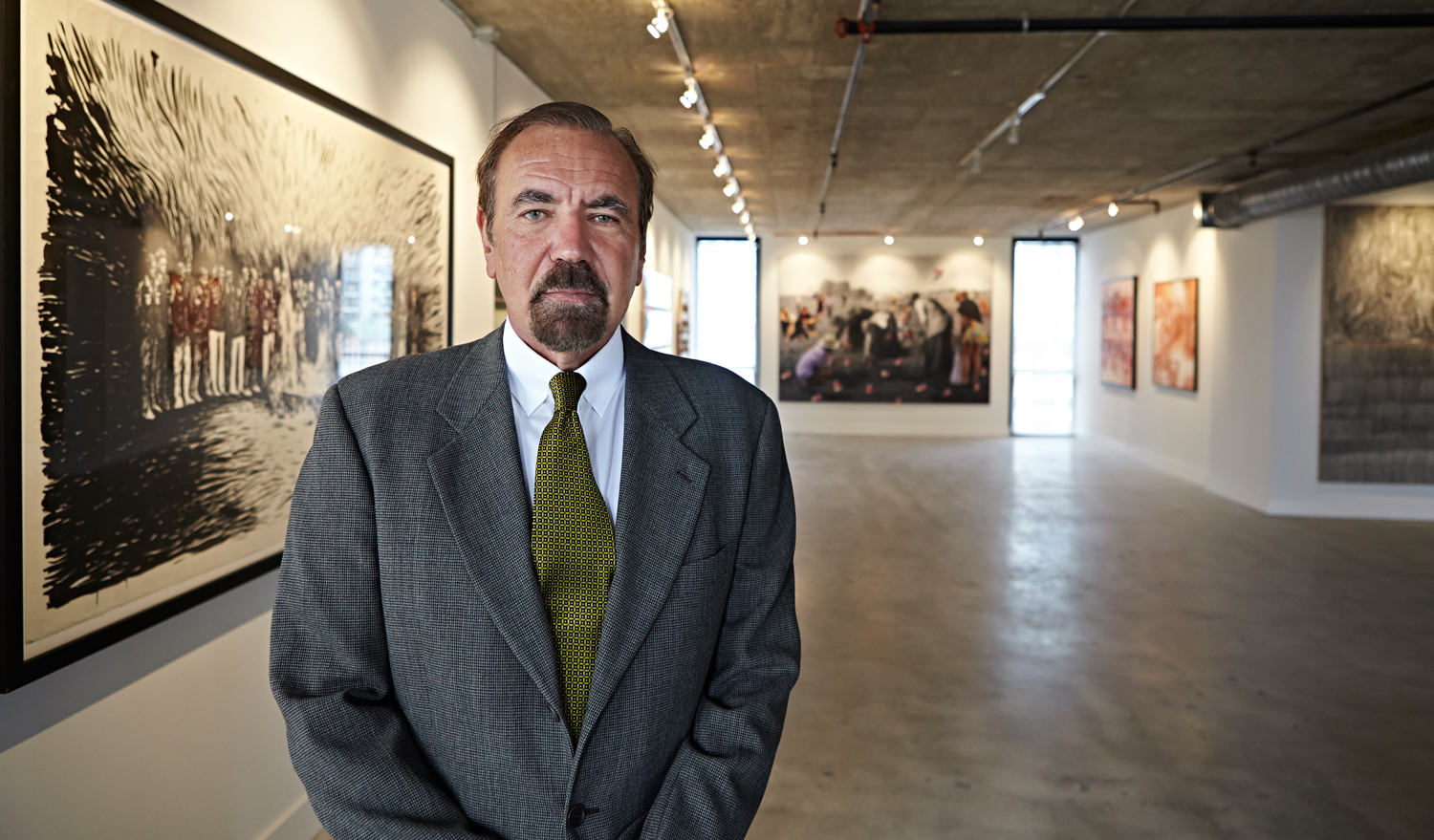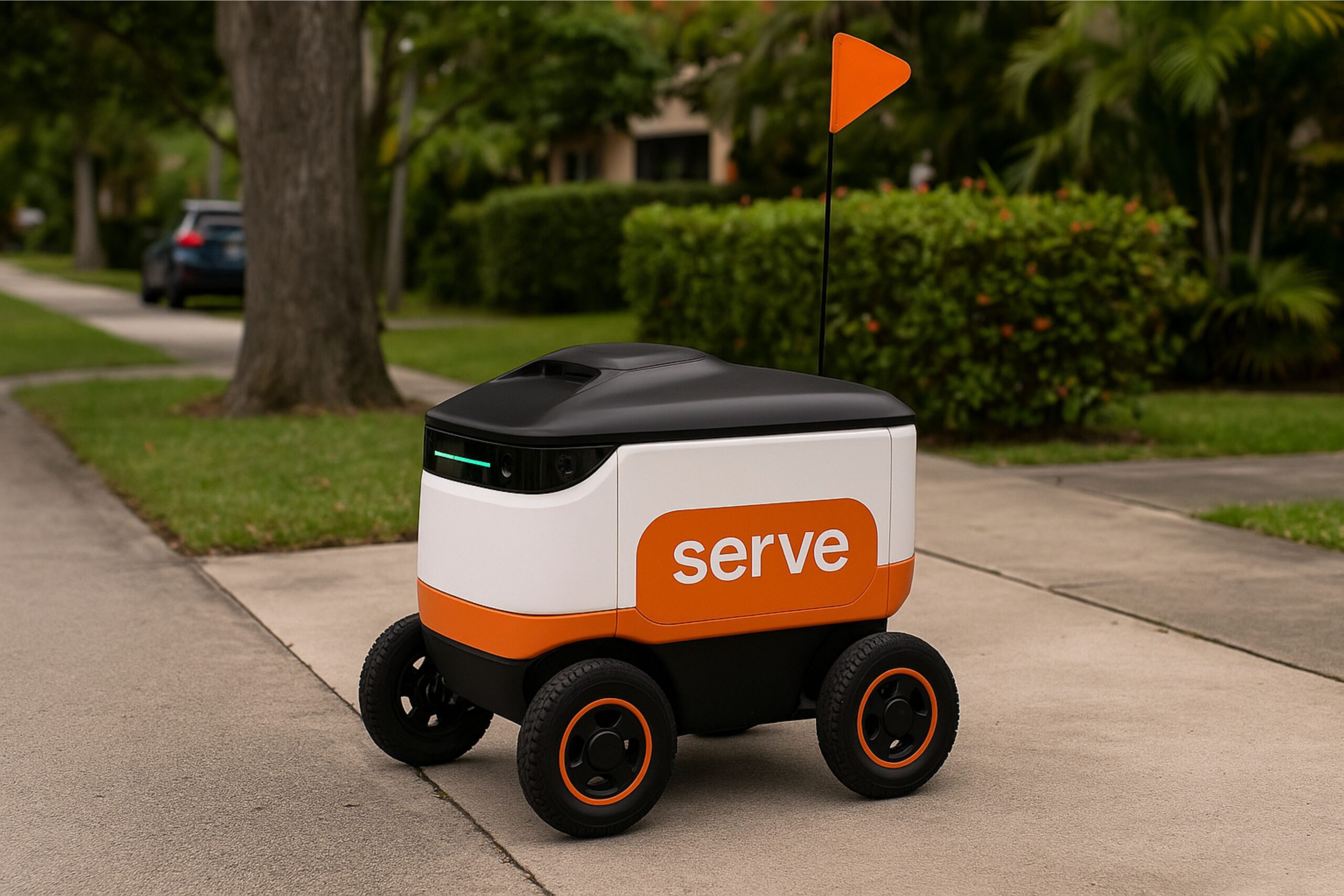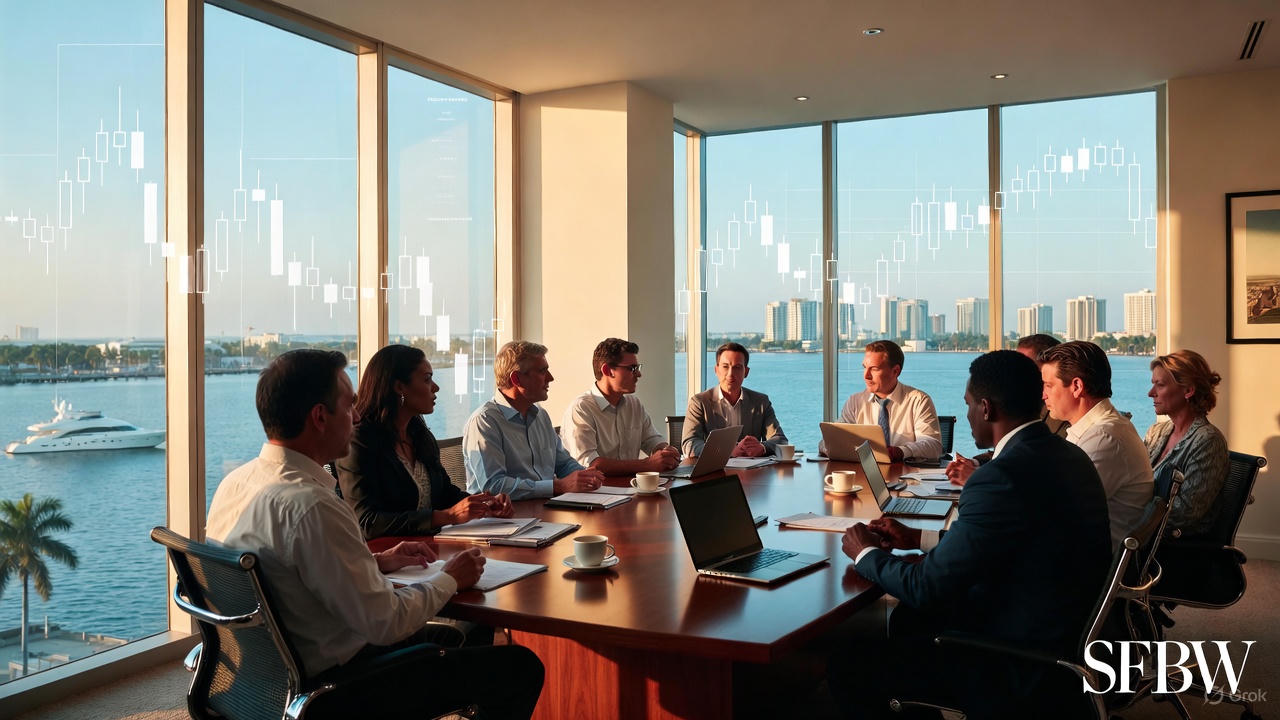Henry Flagler was the original architect of South Florida, but Jorge Pérez is arguably the biggest modern contributor.
Since Pérez founded the Related Group in 1979, it has built 80,000 condominium and apartment buildings in the state – the vast majority in South Florida. That’s roughly enough units to house everybody who lives in Miami Beach and Fort Lauderdale. However, Pérez transcends being a mere developer by enlisting many of the world’s top architects, interior designers and artists.
During a 75-minute exclusive interview, Pérez talked about what’s next with previously undisclosed information about new projects in West Palm Beach and Fort Lauderdale, plus the next hot neighborhoods in the Miami area.
The interview and photo shoot were on the 10th floor of the 444 Brickell building in Miami, where Related is planning a waterfront project that’s reminiscent of Icon Brickell across the street. Currently, the floor is home to a museum quality collection of modern art that’s slated to go into dozens of projects.
The following interview has been edited for brevity and clarity.
Q. We talked 10 years ago and you said a lot of people were missing the transformation of the region into a string of 24-hour cities and what it means to our future. Where are we in that transition?
A. We are a lot further than we were 10 years ago. Miami is truly becoming a 24-hour city. I get very excited about what has happened in Miami, but when I go to New York, Chicago, London and Madrid, I still have a feeling we need so much to get there. There’s so much to be done in almost every area.
One is density. When you look at Miami proper it has a half million. Miami-Dade County has 2 million, but in an urban core we are still a small city compared with world cities.
People are what makes cities and allow cities to have great cultural facilities. You can’t have theater at the premier scale and compete with cities like London, New York, Chicago and San Francisco without a strong population base.
It’s the same thing with parks. We should be proud of Museum Park, but when you go to Chicago and look at Millennium Park and New York and Central Park, you realize we are very far from getting to the point where we are an outstanding example of an urban center.
We are blessed with fantastic weather and greater water. It’s a beautiful city, like Sydney is a great city and Rio is a great city. We are very young and we are making great strides to what I hope we are destined to be: The capital of the Americas – a center that has the best of Latin America and North America.
Our employment base has to be better and our education base needs to be better. Our infrastructure needs to be better. Our cultural centers need to be better. That’s a challenge, but it creates great excitement.
Q. Have South Floridians become more aware of the 24-hour city phenomenon and what are the signs that they have embraced it?
A.It is no longer a fad. It’s no longer something that is temporary. It’s cool to be in Miami Beach and Brickell.
The first act of embracing comes from the young – where they want to live. I’m surrounded by young professionals. Today, to ask them if they want to have an apartment in Kendall is crazy. They want to go to a neighborhood bar and go to a playhouse and go to great restaurants and bars. That is growing exponentially.
To me things like Uber or being able to move by bicycle are going to help Miami’s urban core become that much more attractive in comparison to the suburban locations, where you need a car for everything and distances are immense.
I had to go to an opening at FIU for the art museum, because I gave them a Cuban collection, and it took me two hours to get from my office today. I know the traffic is not that bad everyday, but I think it is bad every day. It’s a waste of human resources. There’s something better than being in an automobile for two hours.
I think ideas and inventions come from an exchange between intelligent human beings. That exchange doesn’t happen so much in suburbia. I finish work and I go to a half acre with a house. I put the TV on. The urban core is a constant change of people being with people.
When you go to Europe, in the morning you see all the people having coffee in the neighborhood bar with a croissant and then meeting for a drink after work and dinner. That constant intercourse between human beings is what leads us to keep growing and ideas to flourish.
Q. South Beach, Brickell and Palm Beach are recognizable names internationally, but what is the level of recognition of other areas you are active in, such as Fort Lauderdale, Hallandale and Hollywood? Is this part of the education you provide in marketing?
A.It’s definitely part of the education process – one that we have had a hard time in marketing. The Miami market is both European and South America. They recognize South Beach, Brickell and Bal Harbour. When you tell them you’re in Fort Lauderdale, Pompano Beach or Hallandale, they say, “What’s that?” and they don’t want to go there. They don’t feel at ease in a city that is not fully international. When you go to Miami and go to a store and everyone speaks different languages, that puts them at ease.
The perfect model is Rio where Ipanema was the most expensive and then they moved to Leblon. It became more expensive than Ipanema. I think more and more foreigners are starting to understand that areas outside of Miami-Dade are very livable and very urban and have a lot of the amenities.
Q. What are the hottest up and coming areas?
A. I think the area that has taken off very fast is Edgewater, both east and west of Biscayne Boulevard. We are seeing huge growth there. I think you are going to find rental apartments and lower priced condos west of Biscayne and higher prices for the ones that are on a wide bay. We bet on that area very heavily, thinking that was a natural expansion between the Design District and downtown.
Wynwood has not only taken off as an art center, but the city is considering some zoning changes so you can go into and develop that area.
I think there is an area sort of left over in Miami from 60th Street to Aventura and I think that corridor will expand. I call it North Miami, but it’s sort of a no name area where the Jockey Club is.
Q. The redevelopment of the Rybovich Marina in West Palm Beach involves the Huizenga family. Tells us how your involvement came about and what opportunity you see there.
A. We both had two great sites in what is the largest private waterfront location in West Palm Beach – minutes from downtown and minutes from City Place – in an area that is a little bit forgotten and has great potential. Instead of going to master plans that compete, we decided to get a great urban planner. Arquitectonica finished the master plan.
It’s great not only for the Perezes and Huizengas, but great for West Palm Beach. There will be restaurants, shops and residential all combined to make what I think is going to be the most important waterfront development in Palm Beach County.
Q. You’ve contributed a lot to culture in South Florida, most notably with the Pérez Art Museum Miami. How important has the creation of more cultural institutions and events been to furthering our growth? What’s missing?
A. We need both more of what we have and better of what we have. Take theater for example, the two great cities you think of right away are London and New York. For us to get there will be centuries when it comes to theater. We have developed a pretty good regional basis, Coral Gables, Little Havana and Aventura, that complement the Adrienne Arsht Center. I still would love to see a greater variety of offerings than we have now. But, again, that comes with, “Where is your audience?” For us to have an audience goes right to density.
Our art museum is better than it was, but we need to build a great museum that competes with the great museums of the world. I think we are getting there and getting a lot of donations. I hope for public and private donations so Museum Park becomes a world class park. I’d like to see a restaurant on the bay like Tavern on the Green and sculptures like in Chicago. For that to happen, people need to be a lot more generous with their pocketbooks. We are a city that doesn’t have a large corporate structure – we don’t have the Coca-Colas and Googles that can write us large checks that help us improve our cultural facilities.
That may be the single biggest challenge in Miami: attracting those large well-paying companies and getting the individuals here to be more generous with their money.
Q. You’ve partnered with a lot of the biggest names in architecture and design, such as Arquitectonica, Sieger Suarez, Cesar Pelli, Yabu Pushelberg and Philippe Starck. What’s your process for creating a vision for your developments?
A. Every time we find a site we think, “What is our market and how do we create to satisfy that?” The aesthetic of that is paramount. From the moment we see the site, we think who is the great architect or interior designer who can be involved in that project.
If it’s $5 million a unit for an older buyer, our architect and artists will be much more oriented towards that. Right now we are doing a project where Arquitectonica is doing a very funky design. The art pieces are going to be more contemporary.
Every building that we do, we sit down with our interiors people, with our architectural team, with our art consultants and say, “This is the price range for this location. This is the type of project we think we are going to sell. This is the type of audience we are going to have. Who are the architects and designers who can provide us with the best product?”
We look at architecture and interior design books from all over the world. We were meeting with Ricardo Bofill from Spain to possibly design a new product we are thinking about in Sunny Isles. When we were planning Park Grove in Coconut Grove [a three-building project with Terra Group], Rem Koolhaas was selected, but we did a charette where we had four or five major architectural firms that presented.
The selection of art, design and architecture is a consuming process for us that we are involved with from the moment that we buy a piece of land to the last piece of furniture we put in when we finish the building.
We are immensely detail oriented. I am involved in every decision with my people in selection of the architecture, interior, landscaping and art.
Q. Some property owners have balked at helping create a continuous promenade from Brickell Avenue to 36th Street, near the site of Related’s Paraiso Bay. What would you tell them?
A. No. 1, from your purely selfish financial side, I think that being in a building where you can come out and jog wherever you are to downtown Miami and back adds tremendous value to your property.
Some people are saying these people walking can come onto your property. That’s not true because all the buildings will have security systems where you can’t come in from the bay walk to the buildings.
From 36th Street to downtown and then curving to Brickell to have a continuous baywalk would be a dream to come true.
Q. Wayne Huizenga once had a vision to create development around the Miami Dolphin’s Stadium and there was hope that the Marlins” Ballpark might propel a rebirth in Little Havana. Is it possible for stadiums to create this sort of catalyst outside an urban core?
A. I don’t think a stadium on its own is a draw to build a neighborhood around. I think you can create all the additional amenities around that neighborhood so it will improve and will become much better than it was before.
The things that will do that are tax incentives to provide greater density around the stadium. I’m talking about the Marlins Ballpark so you can do midrise and high-rise.
I think putting the soccer stadium, if it comes to Miami, would fortify that neighborhood, particularly since across the river you have one of the greatest employment centers [the medical and government campus]. I would be a big voter for a soccer park near the Marlins stadium.
Q. Have you given David Beckham any advice on where the soccer stadium should go?
A. I have been asked from both sides – the private side and public side – what I think about different sites. I think we are doing it in an ad hoc way. I have given my opinion to people that a committee made out of public officials, involved neighborhood people and knowledgeable people of sports can be instituted. Five to eight people to really deeply study the sties that are possible and make a recommendation to the public officials based on that.
We need to get away from “What about this one and what about that one?” and getting enamored without knowing how it works.
Q. There have been reports that Genting has approached you about the Resorts World site in Miami. Are you interested?
A. I think that site lends itself to an outstanding mixed-used development that will provide a base in the same way that the World Center and Brickell City Centre are doing.
I would be extremely interested if they would offer for me to participate in a development of that type as long as there was no gambling involved. I am not for gambling in Dade County.
I think we have worked very hard – me for four decades now – in this city, making Miami a city recognized all over the world as a great place to live, a great place to invest and a great place to grow a family.
I don’t think Miami wants to be like Las Vegas. I have nothing against Las Vegas. I just don’t think casino gambling should be part of our growth equation. We don’t need it. We are doing well without it. I think it has more negatives than positives.
Q. What’s the potential impact of transportation infrastructure improvements, such as All Aboard Florida, commuter rail on the FEC Railway and The Wave trolley system in Fort Lauderdale?
A. I think it’s going to have a huge impact. We are lacking in quick ways of movement between Miami Beach and downtown Miami and in the downtown core getting from Brickell to Midtown and the Design District.
All of these systems will be great improvements.
Q. It seems like a lot of western cities are now trying to create live/play/work downtowns. How does Related fit into that scenario?
A. We’ve done it. I almost call it satellite cities. The best examples are the new towns in London that developed in circles around the main city.
You create these neighborhoods where you have almost replicated that urban feel in a neighborhood. We are very big in that.
In Doral we are creating a city center. It’s a large open space so it’s not a mall shopping center – I hate that word – with a movie theater, grocery store and 10 different restaurants. On top of that, we are going with residential, single family, on one side.
Delray Beach is a perfect example where you have a central street. Those complement our downtowns as opposed to moving to West Kendall where you are adding shopping malls and strips center. We built City Place in West Palm Beach.
Q. Your son Jean Paul has become active in your company. What insights does he bring that those of us in an older generation might not have?
A. When we sit down and do a project I’m not stupid enough to think I know how to please that 30 to 40 generation, so we have everyone from our marketing people to our public relations people say, “This is the things we want.”
They say, “Forget hot tubs, we don’t use them anymore.” They will say it’s important for us to get a food service.
I always think New York is the most competitive city in the world. I sort of had a requirement that my kids go to New York for five years, get a graduate degree and then can come here. [Perez has two older sons active in real estate, but his daughter isn’t in the field.]
You get that competitive experience. If you didn’t work 24 hours a day, you didn’t make it.
What I would expect from them is they would want to continue with the legacy of keeping the Related name alive and growing. They have to develop the passion I have for the business or else they will never really run a business.
Mine is not a business of accountants and professional management. Mine is a business of creation. If I don’t recreate and do a better job than the competition, I die very rapidly.
Pérez Neighborhood INSIGHTS:
Coconut Grove
Q. This was the original urban village in South Florida, but it seemed to fall out of favor. Is it coming back now?
A. Coconut Grove was, even when it was in favor, always what I would call a hippie neighborhood. Whatever you did, people were opposed to it. I live in Coconut Grove.
I think because of that it has become the most undervalued great neighborhood in Miami.
We are building Park in the Grove next to the best marina in the southeast and the best views in South Florida. In South Beach, they would go for $3,000 a square foot. In Coconut Grove they go for $1,000. When I’m finished in Coconut Grove, that is the last great site.
We hope we will bring a couple of great restaurants in the Grove so it will bring the high-end amenities it doesn’t have.
South Beach
Q. Marea is listed as the last of its kind in the South of Fifth neighborhood. Is this an example of how we are nearing the end of buildout in some areas? Also, what’s the status of One Ocean and the potential deal with Russell Galbut and possible master plan of Alton Road?
A. South of Fifth Street is done. Marea and One Ocean were the last of the breed where you could get waterfront views south of Fifth Street. That’s it. There might be one more small site, which will be so, so expensive, but that environment south of Fifth is unequaled – never to be duplicated. I kept one of those Ocean One penthouses for myself.
Russell has a very good site. He consulted Mayor Philip Levine and there was going to be opposition to what I thought could be developed there. Because Philip Levine was a friend, I didn’t want to get involved in that battle.
Brickell
Q. You have a lot of projects in the Brickell area – SLS Luxe, Brickell Heights and the One Brickell parcels at 444 Brickell and 77 SE Fifth Street. How many years do you envision it taking for all of this to unfold?
A. That to a large extent that depends on how many cycles we have in the coming years. Florida has been boom and bust.
I think international is here to stay, but always at a price. Today, when we compare with New York, Chicago and San Francisco, we on Brickell Avenue, are very, very much underpriced.
As land has become so expensive and construction prices increase, we are going to see how international demand responds to those price increases.
The city today that is more on fire than Miami is London. And that’s even higher than New York. Who is buying in London? Middle East, Russian and international buyers. I think more and more will come to Miami.
I wouldn’t trade Miami for any of those places, but I would be very careful about pricing and not starting until we sell out, not overleveraging and making sure you can withstand a downturn.
To think Miami will no longer be an attraction to South American and European home buyers is absolutely foolish.
Hallandale Beach and suburban markets
Q. Talk about Hallandale Beach, Beachwalk and the role of Gemstone Hotels & Resorts. You are also active in some suburban markets.
A. Gemstone is our hotel management company – we are one of the owners. They are going to manage three properties in the Hollywood, Hallandale area in addition to 12 other hotel properties they manage for us from Utah to Berkley.
The other thing we are developing is our rental apartment division – middle income and high-end apartments that we have throughout South Florida, Tampa, Orlando and now Atlanta. That division is doing very well. We are active in Doral, Kendall, Aventura, Davie, Pembroke Pines, Fort Lauderdale, Palm Beach, Orlando and Tampa.
Then, we have a very strong affordable housing division that just does government work. They have also been very success in expanding that company very rapidly. That’s how I started. It’s back to the past.
Fort Lauderdale
Q. Are you still involved in the Ireland’s Inn site? What about Icon Las Olas?
A. I’m the majority owner. We are going to start a sales process. It will be the most expensive condominium in Fort Lauderdale. It will be right on the beach with private elevators. Everything you are getting in luxury in Miami – it will be at a third of the price.
We will be going to the international market, but we think a lot of the Fort Lauderdale empty nesters with the large homes will be buying here.
We are going to be starting Icon Las Olas pretty soon. In the long run it’s a condominium job. We will start it as an ultra luxury rental, for the lessee willing to pay $5,000 a month. We love downtown – the Las Olas area.














